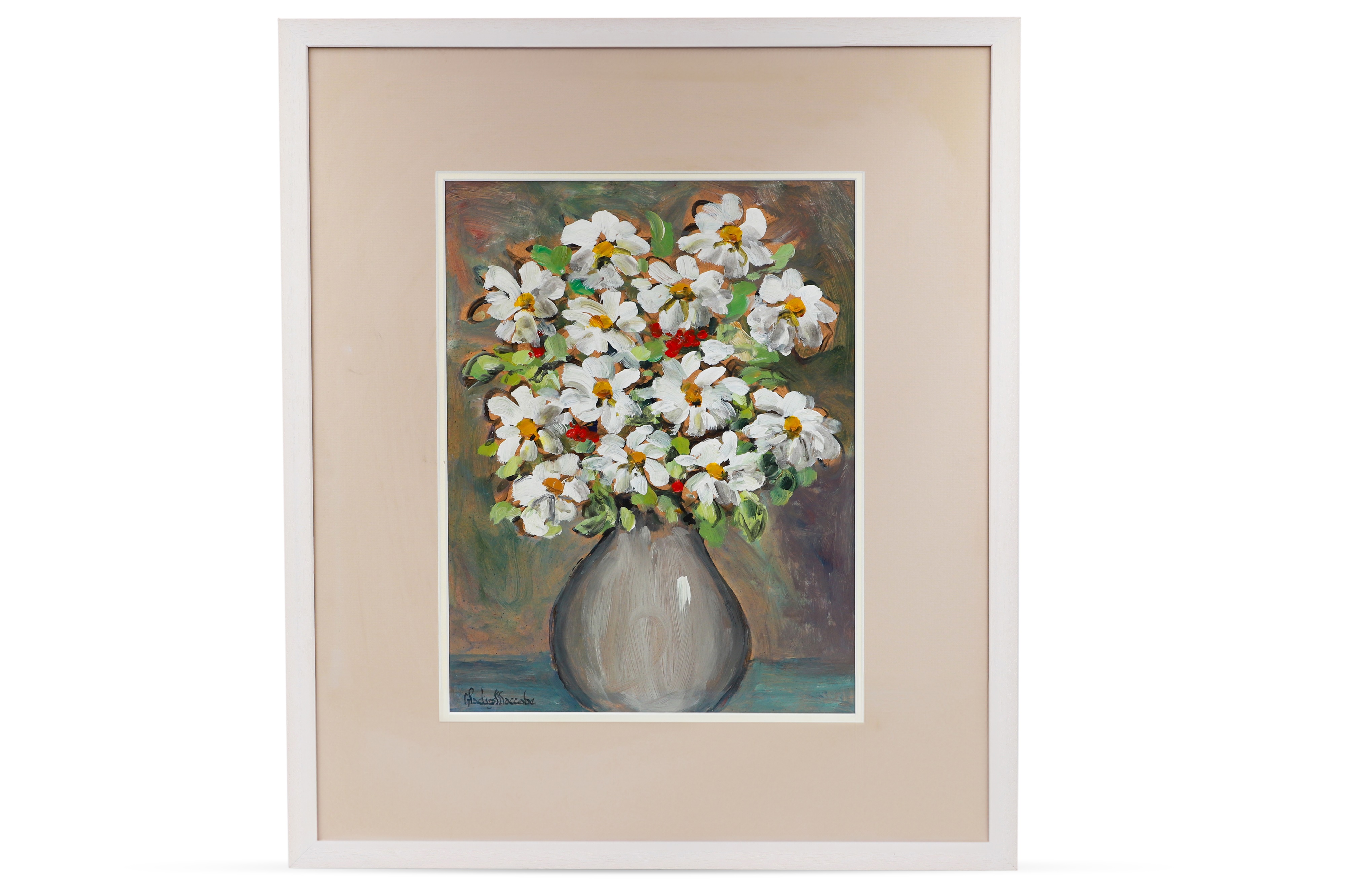

11/01/2024 General News, Artworks
Gladys Maccabe (née Chalmers) was a Northern Irish artist whose artwork had a particular focus on portraying groups of people and rendering the lively atmosphere on canvas. Maccabe used subject matter that was relatable to a broad, particularly Irish audience, and this contributed to her success both as an artist and journalist.
Born in Antrim in 1918, Gladys Maccabe was welcomed into a household that was no stranger to creativity. Her mother Elizabeth was a linen designer, and her father George was an artist who found his creative gifts after leaving the army. Her talents flourished from a young age when she had a work published in the Royal Drawing Society’s magazine when she was just 16 years old. After school, she went on to study both sculpture and commercial art at the Belfast School of Art. Her studies finished here as, while she was offered the opportunity to study and hone her crafts in London, she declined as she was still grieving after the passing of her father.
Maccabe’s professional and personal life both took place almost solely in Northern Ireland, with a small number of exceptions. In 1941 at the age of 23, she married her childhood friend and fellow artist Max Maccabe. Throughout their life together, the couple exhibited numerous times together throughout Ulster and Northern Ireland, and became members of The Contemporary Ulster Group. She was often influenced by what she saw around her and by the hustle and bustle of everyday life. In particular, her art was impacted by the Troubles in Northern Ireland, and had works reflecting these this tumultuous time shown at the annual exhibition of the Royal Institute of Oil Painters in London, in 1969.
In this month’s auction, we have two works by Glayd Maccabe that are relatively different to her typical catalogue of works. Lot 486 has two still lives with flowers by Maccabe. They both show typical traits of Maccabe’s work with thick brush strokes and minimal fine detail. The two framed works would make beautiful companion pieces in any room and could be shown together or independently.